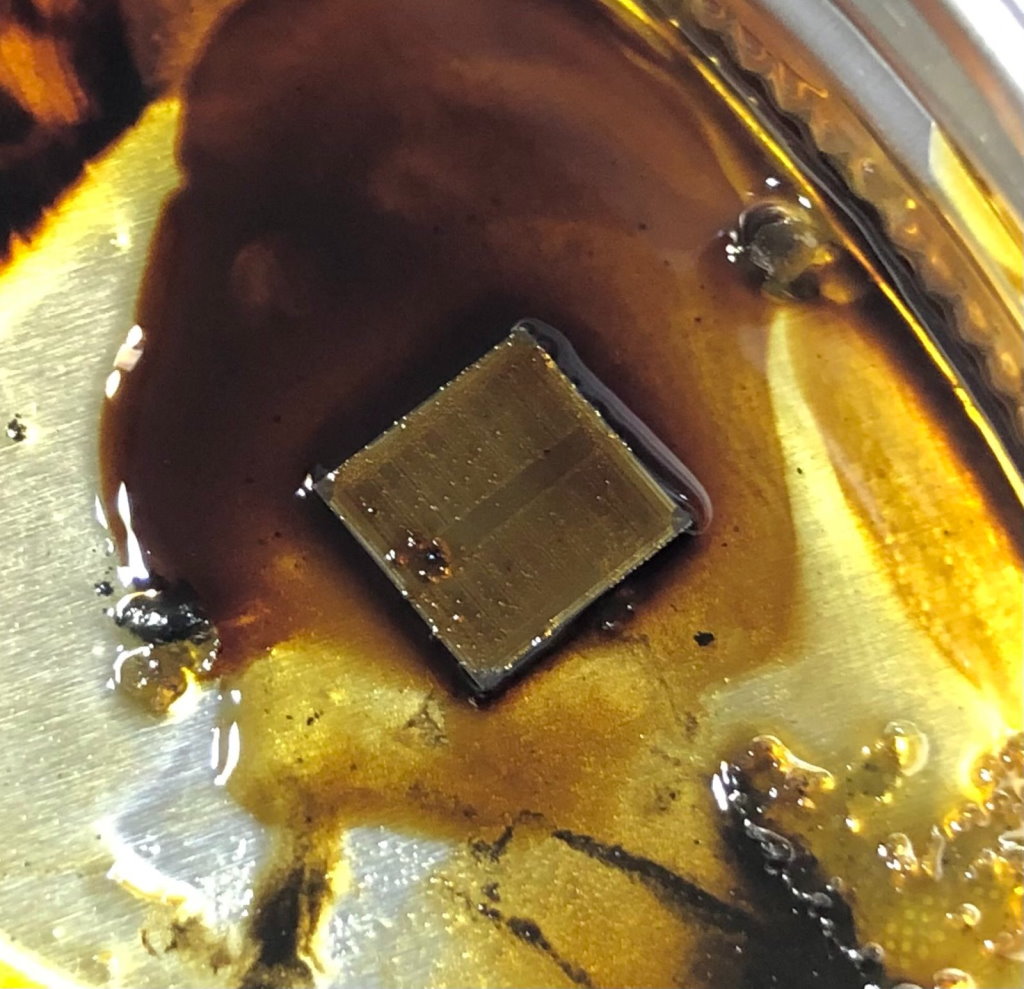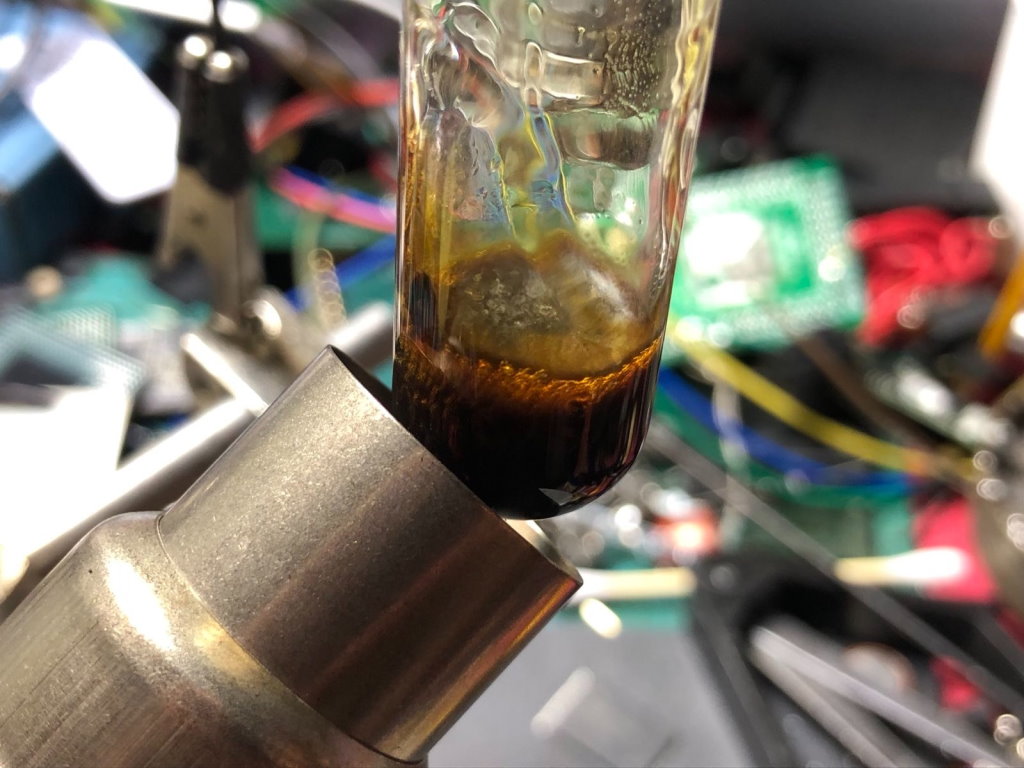Decapping with rosin
One of a more entertaining activities in a lab is looking at IC dice under a microscope. Sometimes you just see funky squiggly lines going here and there, other times you get to see doodles or initials left over by the design team to be found by us. Great if the IC has a glass window, but these days that’s rather rare. So before anything fun gets to happen, you have to liberate the die. How to go around that?
There are a few methods available for a budding silicon connoisseur:
- Whack it with a hammer. Quick results in exchange for large-scale fragmentation.
- Burn it with fire. Quick results plus the stench of magic smoke all over the place; the die also comes out too crispy.
- Chips a la Antoine. When it works, it works just fine, but when it doesn’t you get a die stuck to molding plastic. Moderate chances of fragmentation.
- Splash it with acid. Best results as you can (somewhat) control which bits you don’t want and the IC might even work afterwards. But, acids. Ewww.
- Boil it in rosin. By far the slowest one, but can get rid of that stuck plastic – and your room will smell like an antique shop or something, for a while.
I decided to try #5 from the list and see how it fares compared to what the internets say; I was not, and still am not, up for dealing with highly corrosive stuff without a proper fume hood, hot plate, etc, this is certainly something you don’t want to try at home. The prep work is super easy, all you need is something to hold boiling rosin in and something to provide controlled amount of heat. For the former, I used a small test tube in an improvised stand – okay, just 2-turn coil of elephant wire to clamp it and a bigger helping hands to hold the whole thing. For the latter, my trusted hot air station did the very loud job, also held in helping hands. Let me snap a quick photo for you.

I should say I had a satisfying degree of success with this setup. Noise issue aside, it works just alright, and if you plug the tube with some cotton it even doesn’t smell as much.
Here are some wisdom points I wanted to record for the me two years from today, struggling to replicate the great success.
- Do not put the whole package in. It makes no sense to waste time trying to dissolve as much, just do the Chips a la Antoine on it beforehand to chip off the extra bits.
- Do not put multiple dice in. There is a high chance of sticktion and wasting your time.
- Crank the temperature as high as the setup allows, but make sure to avoid hot rosin spewing out of the tube. The higher the temp, the faster you get the die out. Rosin seems rather docile in that regard, I didn’t manage to get to the point of splashing it around.
- Put in just enough rosin to cover the die. Any more than that will just take space, heat, and your time. So basically just to fill the round bottom of the tube, for medium-sized dice.
- While it’s bubbling, it might be useful to agitate the contents periodically. Doing so might dislodge the goo and save your time.
- The dish gets close when rosin starts to go dirty and might be done when it gets fully opaque and coffee-coloured. You can check whether it’s done by getting the tube out and tilting it to expose the contents.
- When it’s fully coffee and the job is not done, replace rosin.
- When done, just get something like a sheet of metal or a thick foil and dump all the contents out of the tube on it. Before rosin hardens up, find the die and get it out into some alcohol for cleanup. The rest can be discarded or used as an object d’art.
And just like that, after several hours you get a crisp done.

If I were to improve something in this setup, it’s probably replacing the hot air with something else. I can’t imagine it being very energy effective, and it makes a lot of noise. Let me know if you got any good ideas.
UPDATE: Experiments showed that using a bigger nozzle makes for a stark difference, with less air pushed through and considerably higher temperature in the tube, judging by how aggressive the boiling is:

Happy decapping, my dudes and dudettes!